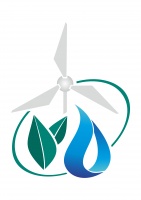Using GIS-technologies and remote-sensing tools to assess the reclamation condition of irrigated land
| Title | Using GIS-technologies and remote-sensing tools to assess the reclamation condition of irrigated land |
|---|---|
| Category of tools | Monitoring system |
| Field of application |
|
| Usability of practice for adaptation to climate change | High |
| Implemented by | Management Department of the Foundation for Reclamation Improvement of Irrigated Land |
| Used by |
Country: Uzbekistan Province: Fergana Region |
| Practice also applied in the following localities |
Syr Darya Region; all districts of Fergana and Syr Darya Regions |
| Local specifics |
|
| Photos |
|
| Practice usage period |
Start date: 01.01.2010 End date: 31.12.2012 |
| Problem solved through this practice |
Overall poor performance of Reclamation Expeditions (RE) and speed of assessment of the reclamation condition of irrigated land |
| Tools used in the practice |
GIS-technologies and remote-sensing tools |
| Description of the practice and its results |
Before the introduction of GIS-technologies, REs performed all operations – including production of maps, identification of areas suffering from land salination, level of ground water mineralization, etc. Actions:
Results: Financial and economic: Reduction of the number of drafting technicians, saving on stationery, etc. Technical: Increased productivity and quality of works by RE office personnel. |
| Lessons learnt and recommendations made |
Lessons learnt: The practice has demonstrated the possibility and efficacy of successful and effective application of GIS-technologies for reclamation as well the overall demand for GIS-technologies and GIS-specialists in other areas (after project completion, the “drain” of GIS-specialists to other industries/organizations started). Recommendations: Financial incentives are necessary to keep GIS-specialists in the water sector. It is necessary to scale-up the GIS-practices in other regional REs of Uzbekistan and irrigation-related organizations, including Water User Associations (WUAs). |
| Source of practice |
Foreign tools (transfer of foreign experience) |
| Brief information on the project |
Project title: Application of GIS-technologies for reclamation. Project duration: Jan 2010-Dec 2012 (3 years). Project goal and objectives: comprehensive support of Reclamation Expedition (RE) specialists; introduction of new technologies; enhancing RE technical capacities to ensure a more expedient implementation of projects to improve the reclamation condition of irrigated land with the aim of receiving better yields of agricultural goods with the simultaneous maintenance of environmental equilibrium in the area. Project beneficiaries: Fergana Region and Syr Daria Region Reclamation Expeditions. Project implementer: Management Department of the Foundation for Reclamation Improvement of Irrigated Land. |
| Funding source | UNDP |
| Information sources |
"Environmental Digest" Journal, Issue 11, 2012. |
| Form submission date | 17.04.2018 |
| Print Compare with other practice |




